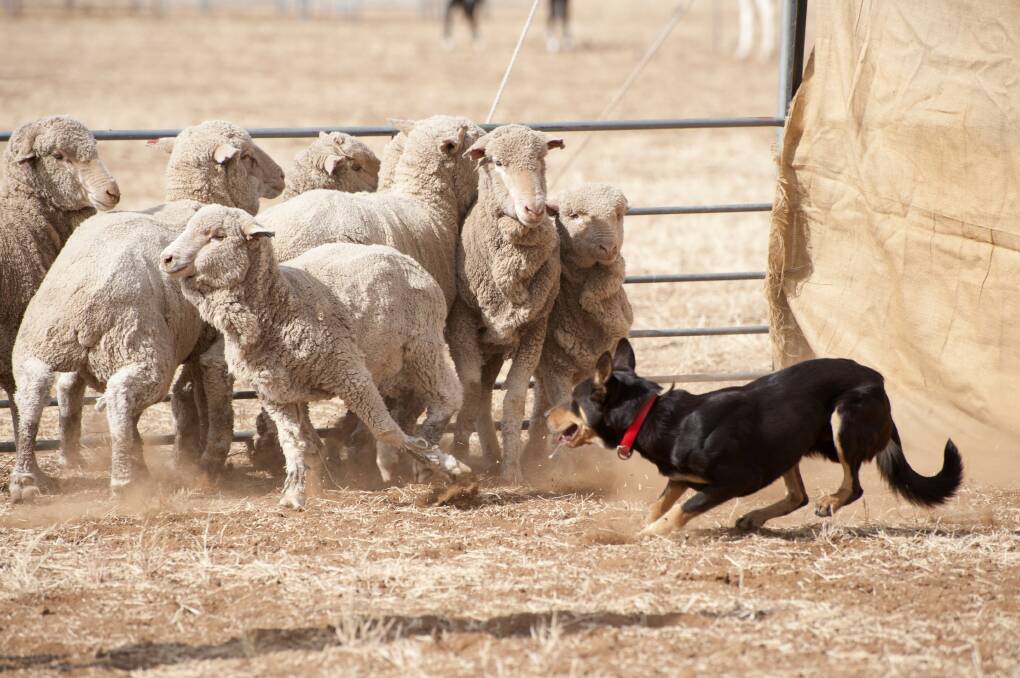Selecting the right working dog food

This is sponsored content for CRT.
Whether you own one or many working dogs, the decision to feed them the best food for purpose can be challenging.
Influencing factors can include, what’s available in your local store, what price you’re prepared to pay and most importantly, how to tell if the nutrition stacks up for the output or work, you’re expecting from your dog.
Most stores stock a wide variety of dog food options and at varying price points but how do you tell if your dog is getting the best nutrition? There are a multitude of claims made on packs and in store, but there are a few basic ways you can see for yourself if the nutrition and claims stack up.
Nutrition begins with the foundations, and the foundation in Australia is that all working dog food should follow the Pet Food Industry Association of Australia Standard and use either Association of American Feed Control Officials (AAFCO) or the European Pet Food Industry Federation (FEDIAF) nutritional profiles to make the key claim ‘complete and balanced’ pet food.
Complete and balanced covers the 40 nutritional minimums and maximums of protein, amino acids, fats, vitamins, minerals as well as the ratios of minerals and fats. Complete and balanced indicates the food contains all the nutrition your dog needs when also provided with clean fresh drinking water.
Complete and balanced dog food is just the beginning of good working dog nutrition.
The key claims on all packaging are the protein and fat levels which must be displayed. The protein expectation for active adult working dogs is a case of the higher the better, but what is high?
The nutritional profile for all dogs’ targets 16.5 percent, so anything at or above 25 percent protein is considered high. It’s the protein that will help with muscle recovery from hard work and provide key amino acids to tired muscles and other body systems to work again the next day.
The expectation is the same for fat – the higher the better. Fat is energy and the nutritional standards suggest a minimum of five percent, so high fat levels is 15 percent or higher. The fat will help with keeping the energy stores topped up and provide the pathway for the essential fat soluble vitamins to be absorbed by the working dogs.
Beyond protein and fat you won’t find much more information on the packaged food in stores. So when you get the product home, how do you know it’s right for your working dog?
Nutritionally, you want to know that the food your dog is consuming is available as nutrition, otherwise known as being bioavailable. Bioavailable means that what is consumed is absorbed into the dog’s body and does not pass as waste (stools) and urine.
This is the first indication you have made a good choice. Once you have transitioned between the old and new food (we recommend a 10 day transition period from old food to new), you should begin to observe changes in your dog.
All dog foods have a proportion of bioavailable nutrition and you can measure bioavailability quite simply with nothing more than a visual check on the stool.
Waste is important and there will always be some, but with a good nutritional profile, less is best. The smaller and firmer the stool the more nutrients have been absorbed into the body which will provide the dog a greater ability to maintain their work rate day in and day out.
There are many ingredients that are good for a balanced and nutritious meal so before you choose your dog food, consider a look at the ingredients list and search for meat and rice. Meat is a great provider of protein and fat to the recipe and is easily digestible.

Secondly, rice is also easily digestible by dogs and assists in keeping the dog in great condition. Rice is a moderate protein source and a highly digestible grain. The higher the proportion is of these key ingredients, the better the bioavailability of the working dog food.
And here’s a handy hint, when checking ingredients note they are listed in order of the highest to lowest percentage inclusion so you want to see meat and rice as close to the start of the list as possible.
The second area you’ll begin to find change is the skin and coat of the dog. A shiny coat indicates there is plenty of fat in the diet and that the key vitamins and minerals are being distributed throughout the body. The skin and coat of a working dog is like the muscles or digestive system and requires specific attention.
The delivery of key nutrition to the extremity of a working dog relies on a solid base of protein and fat, with an abundance of specific nutrients such as vitamins A and E and minerals zinc and selenium to support the formation of cells and the maintenance of the body systems.
These vitamins and minerals, which support the skin and coat, can also contribute to maintaining the brain and vision. Although specifically, β-carotene and vitamin A, E and C are great for the eyes, and fats are great for the brain.
The use of essential vitamins and minerals are common to meet the complete and balanced nutrition, but for working dogs the recommendation is to find a higher contribution. As mentioned previously, if the packaging is not going to help, it’s up to you to compare your dog’s alertness and longevity during a single workday or week to spot signs of mental and/or physical fatigue.
Brain development begins before birth during gestation as well as through the lactation cycle. For a puppy, a puppy food is recommended that contains natural Omega 3 compounds DHA and EPA for brain development with a high protein and fat contribution that can be continued into the formative months of a puppies life.
Another key consideration is the age of the puppy – the larger the dog, the longer it is considered a puppy. Large dogs will be a puppy for 18-months and giant breeds for 24-months, so to provide nutritionally designed puppy food during this extended period will help promote great health benefits to working dogs.
At the other end of your dog’s life, the retirement years, importance should be placed on providing your hardest workers with the nutritional needs they deserve.
Dogs seven years old or more are considered senior and after years of long, tough days out in the paddocks their joints, teeth and muscles need the appropriate nutrients to support them.
A senior dog loses muscle mass and gains fat as they age so to support your aging dog consider food that is reasonably high in crude protein with a reduction in crude fat from what they may have consumed during their working days.
Supporting the nutrition, a balance of vitamins A, E and C and healthy Omega 3 fats (especially DHA) is necessary to help keep their brain and eyes functioning as best they can for as long as they can.
Packaged working dog food contains all the nutrition your dog will need during inactivity and peak work. Whether you’re purchasing a puppy, adult or senior product, you can supplement the diet with toppers such as meat or eggs for example.
As supplements, make sure these toppers don’t make up a high proportion of the diet. A topper once a week will not affect your dog’s nutrition, but over a long period, a diet high in one nutrient such as protein may reduce the level of another such as minerals or vitamins.
If you find yourself switching working dog foods for availability in store, price or to avoid eating fatigue remember to check the bioavailability of the food by looking at the stool volume as well as watching for any changes to the skin and coat, including the feet or pads and looking for signs of alertness or fatigue.
By following these simple checks at home or in the workplace you will be able to make your own decision on what foods are best for your hardest workers.
This is sponsored content for CRT.


